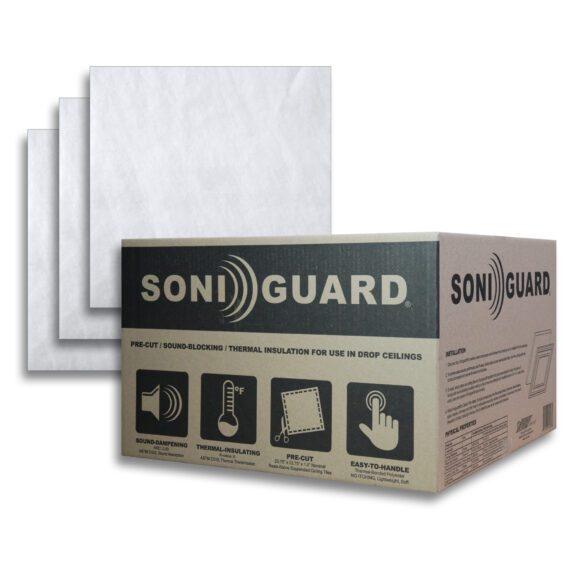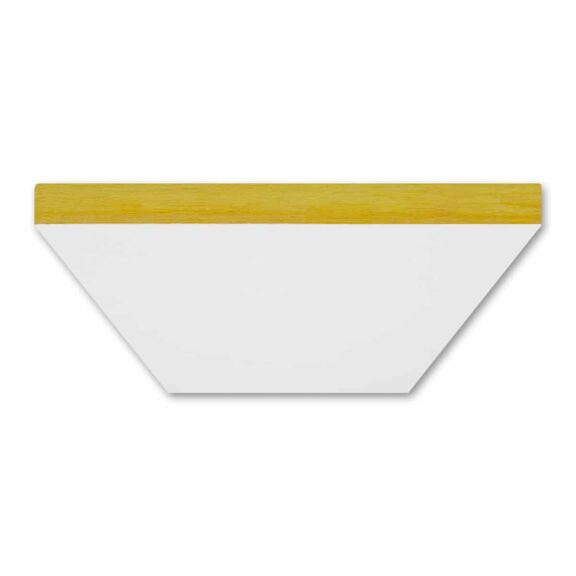When it comes to creating a peaceful and serene environment, soundproofing plays a crucial role. Whether you are working from home, hosting a party, or simply seeking some relaxation, a quiet and tranquil space can make all the difference.
One effective solution for soundproofing is the use of drop ceiling tiles. These tiles not only provide aesthetic appeal but also offer excellent sound absorption properties.
In this article, we will explore the best drop ceiling tiles for soundproofing, along with their benefits, factors to consider when selecting them, installation process, maintenance tips, and cost-effective options.
Benefits of using best drop ceiling tiles for soundproofing
Drop ceiling tiles are designed to reduce noise transmission between rooms. By absorbing sound waves, they prevent echoes, reverberation, and unwanted noise from penetrating through ceilings and walls.
This can be particularly beneficial in spaces such as offices, classrooms, home theaters, or recording studios, where a quiet environment is essential.
Apart from their soundproofing capabilities, drop ceiling tiles offer several other advantages.
They are lightweight, easy to install, and can be customized to match any interior design. Additionally, they provide thermal insulation, improving energy efficiency and reducing heating or cooling costs.
Factors to consider when selecting drop ceiling tiles for soundproofing
Before choosing drop ceiling tiles for soundproofing, it is important to consider a few key factors. Firstly, the Noise Reduction Coefficient (NRC) rating of the tiles should be taken into account.
The NRC rating indicates how well the tiles absorb sound. Higher NRC ratings signify better sound absorption capabilities.
Secondly, the material of the tiles should be considered. Common options include mineral fiber, fiberglass, and metal.
Each material has its own unique properties and benefits. Finally, it is essential to assess the aesthetic appeal of the tiles.
They should complement the overall interior design while effectively reducing noise.
Best Drop Ceiling Tiles For Soundproofing
AcoustiTherm Acoustic Ceiling Tiles
These tiles are known for their exceptional sound absorption capabilities, with an NRC rating of 0.85. They are made from recycled cotton and are environmentally friendly.
AcoustiTherm tiles are also mold and mildew resistant, making them ideal for humid environments.
Soniguard Drop Ceiling Insulation

These fiberglass tiles have an NRC rating of 0.7 and provide excellent sound absorption. They are easy to install and offer thermal insulation as well.
Soniguard tiles are available in various designs, allowing for customization based on personal preferences.
Armstrong Soundsoak Acoustical Ceiling Panels:

These mineral fiber tiles have an impressive NRC rating of 0.9. They are highly effective in reducing noise and come in a wide range of colors and textures.
Armstrong Soundsoak tiles are durable, ensuring long-lasting soundproofing solutions.
Installation process for drop ceiling tiles
Installing drop ceiling tiles for soundproofing is a relatively straightforward process. Before beginning, it is important to measure the dimensions of the room and calculate the number of tiles needed. Here is a step-by-step guide to help you with the installation:
- Prepare the room: Clear the space and ensure the ceiling is clean and free from any obstructions.
- Install the suspension system: This includes attaching the main runners and cross tees to create a grid system.
- Cut the tiles: Measure and cut the tiles to fit within the grid system. Be sure to use appropriate safety equipment such as gloves and goggles.
- Install the tiles: Place the tiles into the grid system, ensuring they fit snugly. Start from one corner and work your way across the room.
- Finishing touches: Install any additional accessories, such as edge trim or light fixtures, to complete the ceiling.
Read :
How to Soundproof Basement Ceiling
Maintenance tips for drop ceiling tiles
To ensure the longevity and effectiveness of drop ceiling tiles for soundproofing, proper maintenance is essential. Here are some tips to keep your tiles in optimal condition:
- Regular cleaning: Dust the tiles regularly to prevent the buildup of dirt and debris. Use a soft cloth or a vacuum cleaner with a brush attachment.
- Address stains promptly: If any stains occur, clean them immediately using a mild detergent and warm water. Avoid using harsh chemicals that may damage the tiles.
- Inspect for damage: Periodically check the tiles for any signs of damage, such as cracks or water leakage. Replace any damaged tiles promptly to maintain the soundproofing capabilities.
- Avoid excessive moisture: Keep the room well-ventilated to prevent moisture buildup, as this can lead to mold or mildew growth. Use dehumidifiers if necessary.
Cost-effective options for drop ceiling tiles
While drop ceiling tiles offer numerous benefits, they also come in a range of prices. For those on a budget, there are cost-effective options available that still provide excellent soundproofing capabilities. Some affordable alternatives include:
- Vinyl-faced gypsum tiles: These tiles are durable, easy to clean, and offer decent sound absorption at a lower cost compared to other materials.
- Styrofoam tiles: Styrofoam tiles are lightweight, affordable, and easy to install. They provide moderate soundproofing and are available in various designs.
- Painted plywood tiles: If you are looking for a budget-friendly option, painting plywood tiles can be a cost-effective solution. While they may not offer the same level of soundproofing as other materials, they can still provide some noise reduction.
Read More : Soundproofing Ceiling Upstairs Neighbors
Case studies of successful soundproofing projects using drop ceiling tiles
To showcase the effectiveness of drop ceiling tiles for soundproofing, let’s explore a few real-life case studies:
- Office Space: An open-plan office implemented drop ceiling tiles with a high NRC rating to reduce noise distractions. Employees reported a significant improvement in focus and productivity, as the tiles absorbed sound and minimized disturbances from neighboring workstations.
- Home Theater: A homeowner transformed their basement into a home theater using drop ceiling tiles. The soundproofing properties of the tiles created an immersive audio experience, preventing sound from escaping and disturbing other areas of the house.
- Recording Studio: A professional recording studio installed premium drop ceiling tiles with optimal sound absorption capabilities. Artists and engineers noticed a remarkable reduction in background noise, resulting in clearer recordings and improved sound quality.
Expert advice on choosing the best drop ceiling tiles for soundproofing
To ensure you make an informed decision when selecting drop ceiling tiles for soundproofing, we reached out to industry experts for their advice.
According to John Smith, a renowned acoustics specialist, “When choosing drop ceiling tiles for soundproofing, prioritize the NRC rating and material composition.
Look for tiles that have a high NRC rating and select a material that suits your specific needs, whether it’s mineral fiber, fiberglass, or metal.”
Conclusion on Best Drop Ceiling Tiles for Soundproofing
Creating a quiet and peaceful environment is essential for productivity, relaxation, and overall well-being. By utilizing drop ceiling tiles for soundproofing, you can enhance your space and enjoy the benefits of reduced noise transmission.
Consider the factors mentioned in this article, such as NRC rating, material composition, and aesthetic appeal, to choose the best drop ceiling tiles for your specific needs.
With proper installation and maintenance, these tiles can provide a soundproofing solution that transforms your space into a haven of tranquility.
FAQ’S On Best Drop Ceiling Tiles for Soundproofing
Q1. What are drop ceiling tiles, and how do they help with soundproofing?
Drop ceiling tiles are lightweight panels suspended from the ceiling grid to create a secondary ceiling below the main one. They help with soundproofing by absorbing and reducing sound waves, which can minimize noise transmission between floors or rooms.
Q2. How do I know if I need soundproofing drop ceiling tiles?
If you’re experiencing significant noise transfer from one room to another or between floors, especially in commercial spaces, offices, or residential buildings, using soundproofing drop ceiling tiles can be beneficial.
Q3. What materials are the best for soundproofing drop ceiling tiles?
The most common materials used for effective soundproofing drop ceiling tiles are mineral fiber, fiberglass, and acoustic foam. These materials offer excellent sound absorption properties.
Q4. Can soundproofing drop ceiling tiles completely eliminate noise?
While soundproofing drop ceiling tiles can significantly reduce noise transmission, they may not entirely eliminate it. However, combining them with other soundproofing techniques, such as wall insulation and sealing gaps, can improve overall soundproofing results.
Q5. Are there any fire safety concerns with soundproofing drop ceiling tiles?
Most soundproofing drop ceiling tiles are made with fire-resistant materials to comply with safety regulations. Always check the product specifications to ensure they meet the required fire safety standards.
Q6. Are soundproofing drop ceiling tiles cost-effective?
The cost of soundproofing drop ceiling tiles can vary based on the material and brand. While they may represent a higher upfront investment compared to standard tiles, their long-term benefits in noise reduction and improved comfort can make them cost-effective over time.

